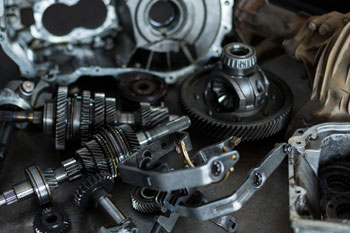Timing and Step-by-Step Instructions
Hey there, gearheads and DIY enthusiasts! Wondering when it’s time to give your transmission some TLC and how to tackle the task yourself? Look no further! In this guide, we’ll walk you through everything you need to know about changing your transmission fluid like a pro. This is a complicated journey and you may want to see advise or repairs from a pro mechanic!
When to Change Transmission Fluid:
Transmission fluid plays a crucial role in keeping your gearbox running smoothly, but it does degrade over time. Here are some signs that it’s time for a change:
- Mileage Milestone: Check your vehicle’s owner’s manual for recommended transmission fluid change intervals. Typically, it’s advised to change it every 30,000 to 60,000 miles, but this can vary depending on driving conditions and the type of transmission fluid used.
- Color and Smell: Healthy transmission fluid is typically red or pink and has a slightly sweet odor. If your fluid appears dark, brown, or has a burnt smell, it’s likely time for a change.
- Performance Issues: Pay attention to how your transmission is performing. Slipping gears, rough shifting, or delays in engagement could be signs of contaminated or worn-out fluid.
How to Change Transmission Fluid:
Now that you know when it’s time, let’s dive into the DIY process:
- Gather Your Supplies: You’ll need transmission fluid specified for your vehicle, a new transmission filter (if applicable), a drain pan, a socket set, and a funnel.
- Locate the Drain Plug and Pan: Park your car on a level surface and locate the transmission fluid drain plug and pan underneath the vehicle.
- Drain the Fluid: Place the drain pan beneath the drain plug, then carefully remove the plug using a socket wrench. Allow the old fluid to drain completely.
- Replace the Filter (if applicable): Some vehicles have a transmission filter that should be replaced during fluid changes. Remove the old filter and install the new one according to your vehicle’s specifications.
- Refill the Transmission: Once drained, replace the drain plug securely, and use a funnel to refill the transmission with the appropriate amount of fresh fluid.
- Check Fluid Level and Quality: Start your engine and allow it to reach operating temperature. Then, check the fluid level and quality, topping up if necessary.
- Dispose of Old Fluid Properly: Remember to dispose of the old transmission fluid responsibly, as it can be harmful to the environment.
By following these steps, you can perform a DIY transmission fluid change with confidence, keeping your gearbox in top condition for miles to come.
Disclaimer:
The information provided in this blog is for educational and informational purposes only. While we strive to provide accurate and up-to-date content, we cannot guarantee the completeness, accuracy, or reliability of the information presented.
It is important to understand that car engine and body repairs can be complex and potentially hazardous tasks. We are not professional auto mechanics, and the DIY techniques and tips provided should be used at your own discretion and risk.
We strongly advise consulting with a qualified and certified auto mechanic before attempting any repairs or modifications on your vehicle. Professional mechanics have the training, experience, and specialized equipment necessary to diagnose and address automotive issues safely and effectively.
By using the information presented in this blog, you agree that we shall not be held responsible or liable for any damages, injuries, or losses that may occur as a result of DIY car repairs. Always prioritize your safety and the well-being of your vehicle by seeking professional guidance when needed.
Amazon Affiliate Marketing Disclaimer: As an Amazon Associate, I earn from qualifying purchases. This means that if you click on an Amazon link included in this blog and make a purchase, I may earn a commission at no additional cost to you. This helps support the maintenance of this blog and allows me to continue bringing you valuable content on DIY auto repairs. Thank you for your support!

